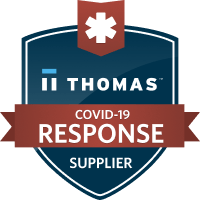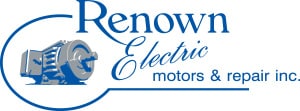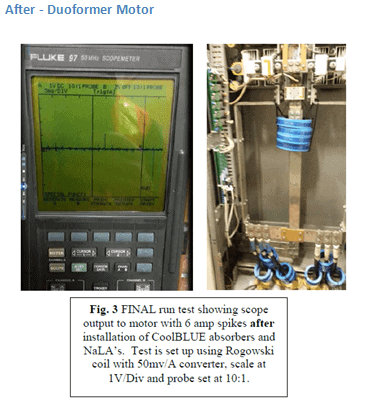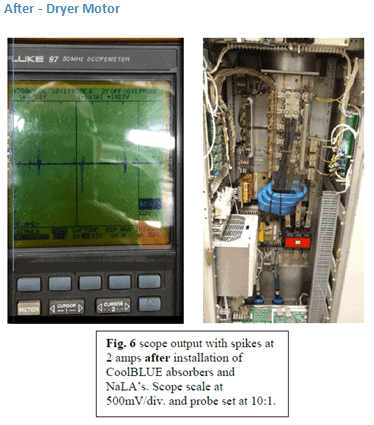A look at two recent CoolBLUE case studies for electric motors.
Most modern electric motors run via a variable frequency drive (VFD) for AC motors and DC controller (usually SCR-based) for DC motors, which are used to control motor speed and/or torque.
While motor controllers save up to 55% in energy costs, they can also create a large amount of electrical and audible noise. This electrical noise manifests as Common Mode Current that can cause a great deal of fluting, frosting, lubrication breakdown and other damage to the bearings.
Here’s why: After receiving a digital signal from the controller, the signal runs through a switch in order to create a signal that the motor can use. The switch, usually an insulated-gate bipolar transistor (IGBT) for AC motors or Silicone Controlled Recifier (SCR) for DC motors, then creates a signal for the motor that causes the electrical noise superimposed on the control signal for the motor.
The noise manifests as “voltage spikes” — at least one for every signal conversion switch at the set switching frequency — the spikes travel from the controller to the motor and are ultimately discharged via the shortest path to ground, usually through the motor bearing but can also jump from stator to the rotor. Over time, this action and the vibration it generates induce bearing damage.
Think of it as high speed rotary Electrical Discharge Machining (EDM) of your bearing running surfaces.
Renown Electric Motors and Repair wanted to seek out and test for a solution to this problem. We investigated the use of CoolBLUE inductive absorbers, also known as common mode chokes, and how they could reduce the high frequency currents that VFDs and DC controllers produce, thus reducing or eliminating bearing fluting and other damage to a motor.
The Plan – DC Motors
To test our theory, we used a Rogowski coil, a toroidal coil used to measure high frequency current pulses on the output of a DC controller; this drive was connected to a 780 HP DC motor on a DuoFormer in a paper plant. The motor and drive are separated by approximately 260 feet of inverter duty cable. We then conducted a second test using the Rogowski coil on the drive output of a 390 HP DC motor for the 4th Dryer drive motor system, where the drive is located approximately 100 feet from the motor.
With the DuoFormer system running, we used an oscilloscope and the Rogowski coil at the drive output and measured current spikes of 20 amps — see figure below — beyond what the DuoFormer needed to function. Similar measurements on the ground wire of the motor showed spikes of 4 amps.
With the 4th Dryer motor system running, the Rogowski coil at the drive output measured current spikes of 4 amps while the ground of the motor showed spikes of 0.6 amps.
The Results
Repeating the DuoFormer test after installing CoolBLUE inductive absorbers and NaLA noise line absorbers showed common mode current reduced to 6 amps at the drive output, a reduction of roughly 70%. Repeating the 4th Dryer test with CoolBLUE and NaLA absorbers installed showed voltage spikes reduced to 2 amps, a 50% reduction. Both measurements well within the safe range for current density ratings of the bearings.
With the inductive absorbers installed, electrical noise was reduced to levels well within the realm of bearing safety.
The Plan – AC Motors
We conducted another test on a nuisance 40 HP AC induction motor with encoder feedback and drive controlling a chill roll on a high speed printing press used to run daily newspapers. This motor was regularly failing with “bearing issues” that upon further inspection by the bearing manufacturer revealed “…electrical pitting that was caused by electric current passing through the bearing.”
The report went on further to state: “The discharges of the electric current generate heat and create small craters on the contact surfaces of the bearing. The generated heat increases the bearing’s operating temperature, reduces the radial internal clearance and may deteriorate the lubricant. The craters increase the bearing’s noise and vibration”.
Ever wondered why your oil was black in your bearings? It is burnt from an electrical storm going off in your bearing not just the heat from the increased operating temperatures that can be caused by many issues like misalignment.
The Results
In this AC motor and drive application, we measured the common mode current on the output of the drive before and after installing CoolBlue and NaLA’s on the drive and achieved a reduction of 5 times (from roughly 20 amps to below 4 amps).
The Conclusion
After conducting tests of CoolBLUE inductive absorbers and NaLA noise line absorbers, Renown found that the absorbers perform very effectively to reduce common mode currents (“voltage spikes”) well within safe limits.
We recommend optimizing the number and type of absorbers depending on the particular motor with which they are to be installed, and expect common mode current reductions in the area of 65%. The absorbers will effectively eliminate the damage that leads to harmful vibrations, extending the life of your motor bearings and reducing incidents of maintenance.
To learn more about CoolBLUE inductive absorbers and NaLA noise line absorbers, download our CoolBLUE Design and Installation Guides today.











